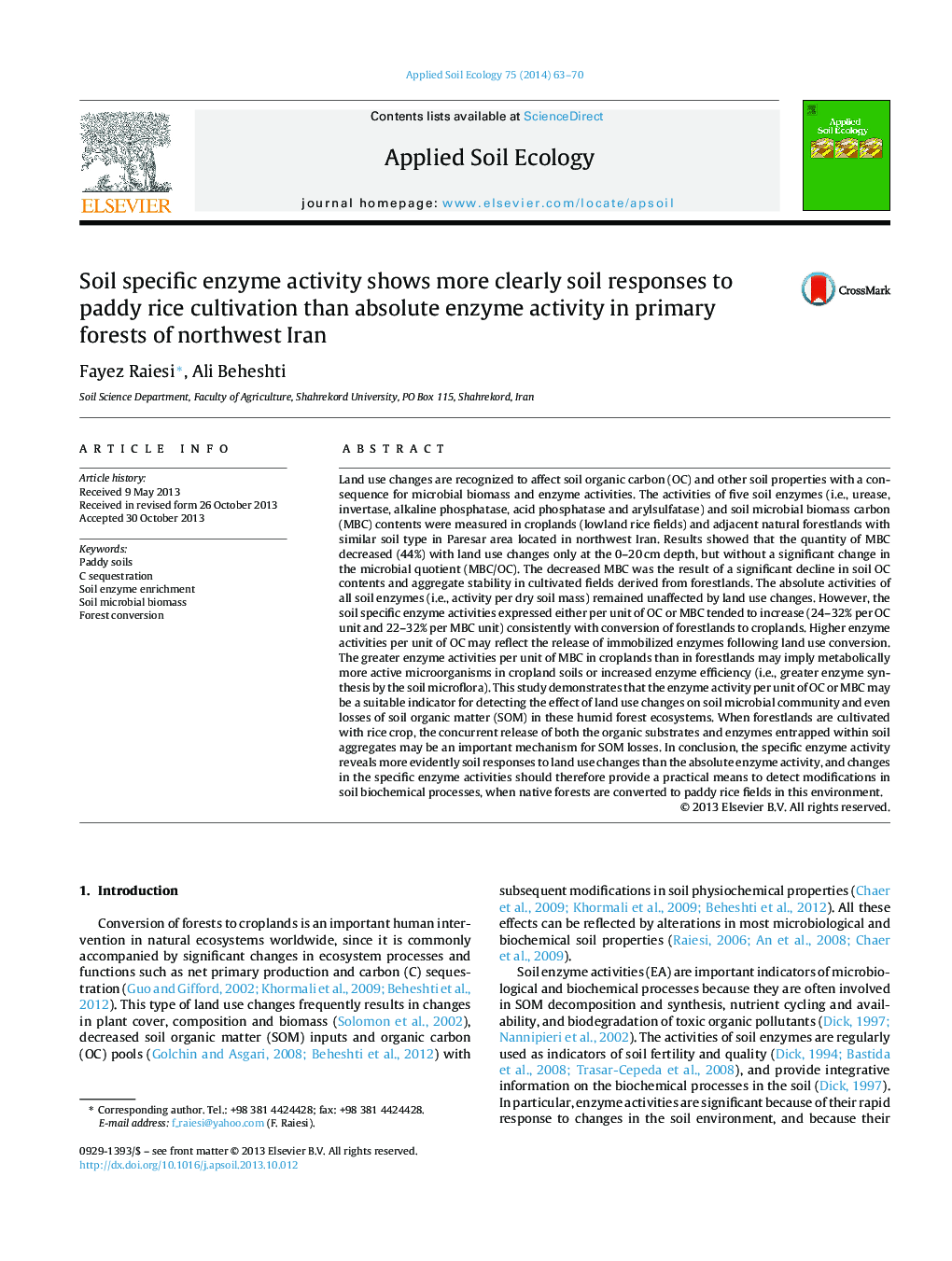| کد مقاله | کد نشریه | سال انتشار | مقاله انگلیسی | نسخه تمام متن |
|---|---|---|---|---|
| 4382280 | 1617808 | 2014 | 8 صفحه PDF | دانلود رایگان |
• Absolute enzyme activity remained unaffected by cultivation of forestlands.
• Specific enzyme activity tended to increase with forestland conversion to cropland.
• Response of soil enzymes to cultivation depended on the way of expressing activity.
• The specific enzyme activity showed clearly soil responses to cultivation.
Land use changes are recognized to affect soil organic carbon (OC) and other soil properties with a consequence for microbial biomass and enzyme activities. The activities of five soil enzymes (i.e., urease, invertase, alkaline phosphatase, acid phosphatase and arylsulfatase) and soil microbial biomass carbon (MBC) contents were measured in croplands (lowland rice fields) and adjacent natural forestlands with similar soil type in Paresar area located in northwest Iran. Results showed that the quantity of MBC decreased (44%) with land use changes only at the 0–20 cm depth, but without a significant change in the microbial quotient (MBC/OC). The decreased MBC was the result of a significant decline in soil OC contents and aggregate stability in cultivated fields derived from forestlands. The absolute activities of all soil enzymes (i.e., activity per dry soil mass) remained unaffected by land use changes. However, the soil specific enzyme activities expressed either per unit of OC or MBC tended to increase (24–32% per OC unit and 22–32% per MBC unit) consistently with conversion of forestlands to croplands. Higher enzyme activities per unit of OC may reflect the release of immobilized enzymes following land use conversion. The greater enzyme activities per unit of MBC in croplands than in forestlands may imply metabolically more active microorganisms in cropland soils or increased enzyme efficiency (i.e., greater enzyme synthesis by the soil microflora). This study demonstrates that the enzyme activity per unit of OC or MBC may be a suitable indicator for detecting the effect of land use changes on soil microbial community and even losses of soil organic matter (SOM) in these humid forest ecosystems. When forestlands are cultivated with rice crop, the concurrent release of both the organic substrates and enzymes entrapped within soil aggregates may be an important mechanism for SOM losses. In conclusion, the specific enzyme activity reveals more evidently soil responses to land use changes than the absolute enzyme activity, and changes in the specific enzyme activities should therefore provide a practical means to detect modifications in soil biochemical processes, when native forests are converted to paddy rice fields in this environment.
Journal: Applied Soil Ecology - Volume 75, March 2014, Pages 63–70
